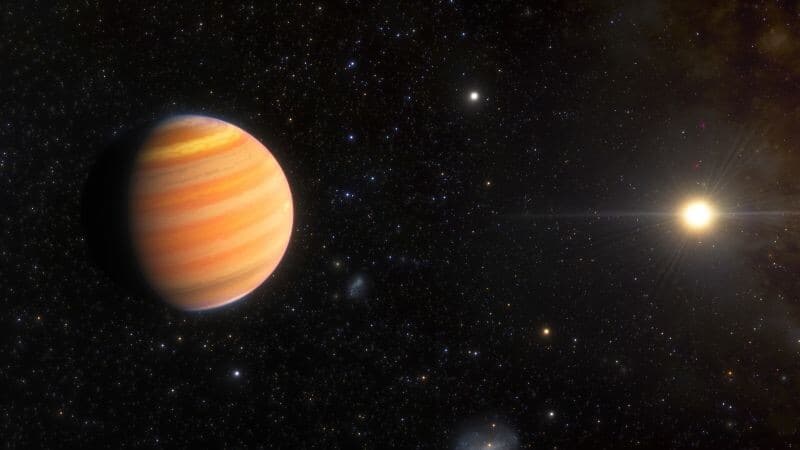
How hot planets are formed? Astronomers shed light on phenomenon
What's the story
Astronomers have discovered an exoplanet, TIC 241249530 b, with a highly oblong orbit that experiences extreme temperature swings. The planet is potentially transitioning into a 'hot Jupiter,' a massive gaseous body similar to Jupiter that closely orbits its host star. The exoplanet orbits a star about 1,100 light-years from Earth and is part of a binary pair. Researchers believe the misaligned orbit of the two stars could be responsible for the planet's transformation into a hot Jupiter.
Orbital eccentricity
Exoplanet's unique orbit and transformation intrigue astronomers
The observations of TIC 241249530 b were first captured by NASA's planet-hunting Transiting Exoplanet Survey Satellite (TESS) satellite in January 2020. The exoplanet has an eccentricity of 0.94, making its orbit more oblong than any other transiting exoplanet ever found. It takes about six months for the planet to complete one orbit around its host star. During this time, it comes extremely close to the star before moving out wide and then returning back to its narrow oval-shaped orbit.
Temperature fluctuations
Extreme temperature swings and unusual orbit
TIC 241249530 b is just 3 million miles from its star at its closest point, causing "enormous temperature swings" over the course of its year. Study co-author Jason Wright noted, "The temperature at the cloud tops gets hot enough to melt titanium during the few days it screams past the star closeup." Interestingly, this exoplanet is also observed to be orbiting backward or moving in the opposite direction compared to the rotation of its star, a rare occurrence.
Orbital evolution
Simulations shed light on exoplanet's orbit
The researchers ran simulations to ascertain how TIC 241249530 b may have ended up in such an unusual orbit and how it may evolve over time. They predicted that the planet likely formed far from the host star and began in a wide, circular orbit similar to Jupiter. However, the gravitational influence of the secondary star altered the orbit of TIC 241249530 b, making it more elongated. This suggests external factors can significantly impact planet's orbital characteristics and evolution.
Transformation prediction
Exoplanet's future as a hot Jupiter
In hundreds of millions of years, astronomers estimate that TIC 241249530 b's orbit will shrink and stabilize to last just a few days rather than the current 167 days. At this point, it'll become a true hot Jupiter. Study co-author Sarah Millholland described the process as "a big dance of orbits that's happening over billions of years." This discovery supports theories about how high-mass gas giants transform into hot Jupiters as they migrate from eccentric circular orbits.
Upcoming studies
More observations to uncover mysteries of TIC 241249530 b
Before TIC 241249530 b, the only other known hot Jupiter was exoplanet HD 80606 b, which was discovered in 2001. The discovery of this second hot Jupiter is helping astronomers confirm their idea that high-mass gas planets transform into hot Jupiters as they migrate from eccentric circular orbits. The team hopes to observe TIC241249530b with the James Webb Space Telescope to uncover dynamics of its atmosphere and see how it reacts to such rapid heating.